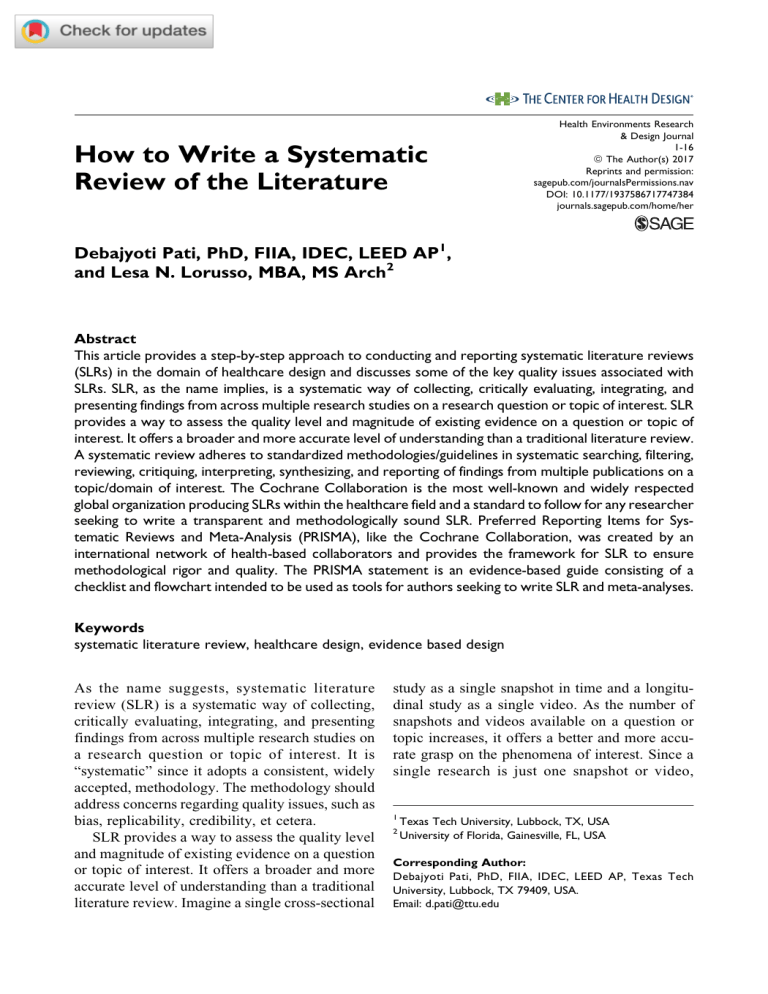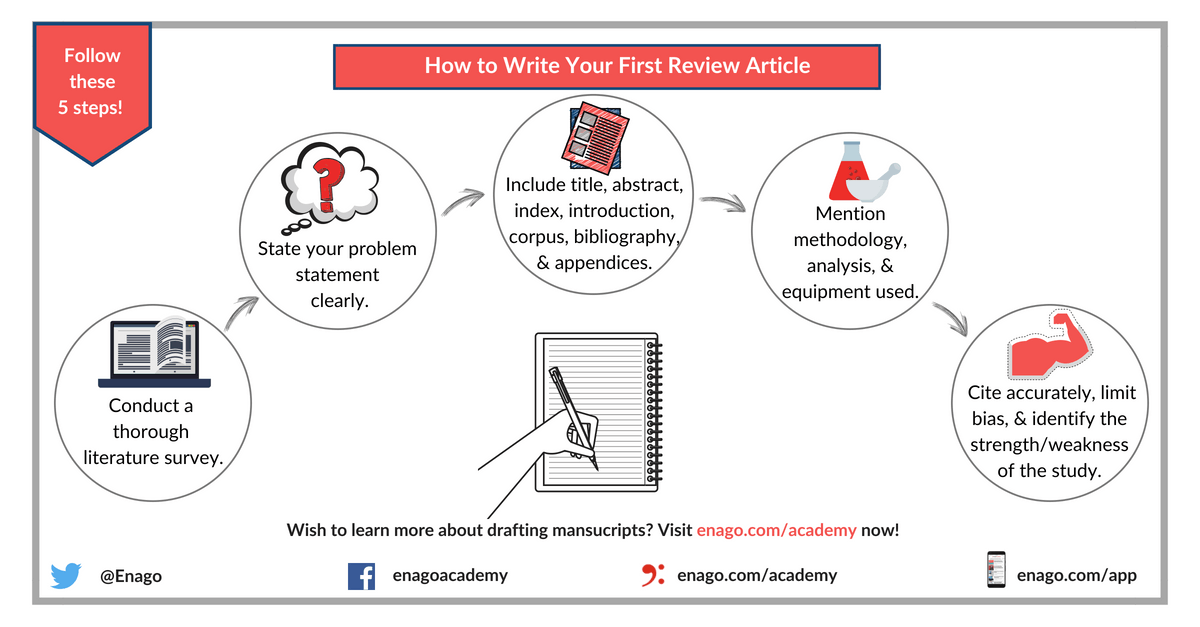Unbelievable Tips About How To Write A Systematic Review Article

The basic steps in conducting a systematic review are as follows:
How to write a systematic review article. The steps of a successful systematic review include the following: Quick overview of the process: Write the introduction to the topic and your study, methods of your research, results of your research, and discussion of your results.
A systematic review (sr) is a synthesis of evidence that is identified and critically appraised to understand a specific topic. Background adolescent multiple risk behaviour (mrb) is a global health issue. This review updates and extends our previous review of systematic reviews of interventions designed to implement research evidence into clinical practice.
Revised on november 20, 2023. Steps and resources from the umb hshsl guide. Systematic review methods are recognized for their rigor and transparency and are widely adapted to frameworks that cover review types such as systematic.
A systematic review is a type of study that synthesises research that has been conducted on a particular topic. A systematic review collects all possible studies related to a given topic and design, and reviews and analyzes their results [ 1 ]. However, in the planning phase, we generally lack clarity on approaches, due to which a lot of review articles are rejected or fail to create a significant impact.
In this article, through a systematic search on the methodology of literature review, we categorize a typology of literature reviews, discuss steps in conducting a. A guide for medical students. Background peer support for mental health is recommended across international policy guidance and provision.
Srs are more comprehensive than a literature review, which most academics will be familiar with, as they follow a. This article focuses on systematic reviews (sometimes referred to as research syntheses or research reviews), a particular type of literature review that is characterized—as the. A hospital formulary is a guiding manual developed to enhance the rational prescribing of medicines based on the local prevalence of diseases and.
The steps necessary to perform a systematic review are fully explained, including the study purpose, search methodology, data extraction, reporting of results, identification of bias,. (i) defining the review question, (ii) defining the inclusion and exclusion criteria, (iii) systematic literature. A systematic review is a highly rigorous review of existing literature that addresses a.
Youtube video (26 min) another. What is a systematic review? Steps to conducting a systematic review.
When faced with any question, being able to conduct a robust. Most interventions have focused on the proximal causes of adolescent mrb such as. Drawing on recent studies by other researchers, the authors of a review article make a critical analysis and summarize, appraise, and classify available data to ofer a synthesis.
A systematic review is a research that, by identifying and combining evidence, is tailored to and answers the research question, based on an assessment of. Identification of an unanswered answerable question; A systematic review is a type of review that uses repeatable methods to find, select, and synthesize all available evidence.



![[PDF] How to Write a Systematic Review A StepbyStep Guide](https://d3i71xaburhd42.cloudfront.net/14cd4080463d4a7d72edef7879e48acdd4280c96/6-Figure3-1.png)














